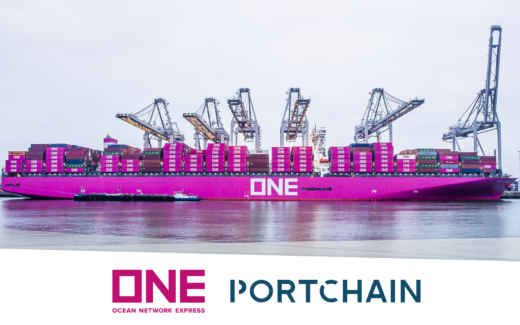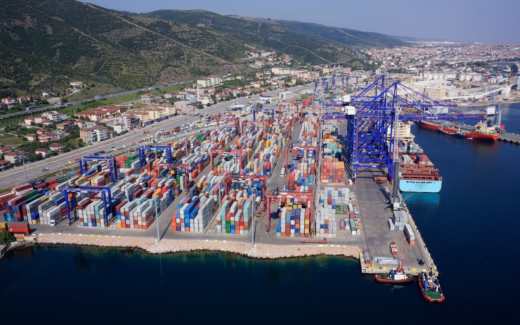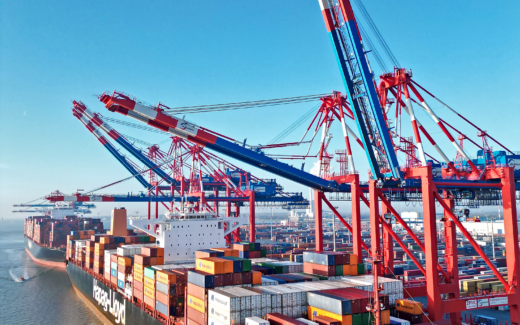
Artificial Intelligence (AI) is currently a popular topic of discussion in the shipping industry. Though the concept might sound futuristic, AI applications are already shaping parts of our everyday lives. Throughout this post we will cover the general concept of AI and its evolution through the years. Ultimately, we will discuss the reasons why AI will grow to become a key growth driver in many industries (including shipping) over the years to come. If you are already well informed about AI, you can skip right to the last section about its applications in the shipping industry.
What is Artificial Intelligence?
At this point, Artificial Intelligence has become mainstream business lingo. But the term AI has been around for many years with varying popularity over the decades. The film community was one of the first to embrace the concept of AI. We can trace examples all the way back to Fritz Lang’s iconic 1927 sci-fi film Metropolis which features robots mimicking human behavior. AI-pioneer John McCarthy was the first to coin the term AI:
McCarthy defined AI as “machines that can perform tasks that are characteristic of human intelligence.[1]”
When looking at Artificial Intelligence, it is helpful to distinguish between what is known as General and Narrow AI.
General Artificial Intelligence
General AI encompasses the more movie-like way to look at it. Think about a supercomputer which possesses all the capabilities of human intelligence. An example from Hollywood is the Terminator: A robot that can learn, think, and make decisions on its own as a result of its’ advanced General AI operating system. At this point, General AI systems like this are still far out in the future. When we see impressive breakthroughs in AI today, they are contained to a single specific task.
We have seen IBM’s Watson beat the grandmasters in Jeopardy, but we would not be able to, for instance, play a game of chess against it[2]. Similarly, Google’s AlphaGO beat the world’s best Go player, but the computer would not be able to answer even the simplest question. However, as these examples show, AI just has to be very good at one thing to be useful, which brings us to Narrow AI.
Narrow Artificial Intelligence
Narrow AI is when a computer imitates human intelligence in one particular area and performs the task more efficiently than any human is able to. One of the first famous examples of this is IBM’s Deep Blue computer that beat Garry Kasparov in chess in 1997. More recently, we have seen huge breakthroughs in image recognition where computers have surpassed human performance in identifying objects. Faster computers, better algorithms, and more data have sparked a revolution in narrow AI. We are now seeing the introduction of these systems across industries.
Computer-aided decision making in industry
Using computers to guide decisions in different industries is nothing new. Most truck drivers rely on a GPS to find the fastest and most energy-efficient route to their destination. Delivery companies use computer systems to find which packages should go into the same truck to minimize delivery costs. Banks rely on fraud detection systems that search through a large amount of data to find suspicious transactions, and flag them for further investigation by a human. Today, we are already benefitting significantly from Narrow AI in our everyday lives.
It is all about collaboration between humans and AI
For AI-driven systems to achieve the highest impact possible, it is crucial that they are operated and monitored closely by humans. For example, after Deep Blue beat Kasparov in chess, a new form of chess took rise called freestyle chess. It allowed teams to combine both humans and machines to compete against each other in a tournament. Chess grandmasters teamed up together, and the most advanced chess computer at that time, Hydra, also competed.
This provided an important new insight. The advanced chess computer performed well as expected, and the team of chess grandmasters also did very well. However, two amateur chess players using a less advanced computer program were able to far outperform both the better chess-players and the computer programs individually. The two players used their strategic skills to control the direction of the game and the computer’s abilities to search through millions of moves quickly to ensure that no errors were made.
Artificial Intelligence’s business implications
Decisions arising in business are vastly more complex than chess. The space of potential solutions to a problem by far exceeds the 64 squares on a chess board. Moreover, in chess there is a clear and unchangeable ruleset that determines how to win. Whereas in business you often have many conflicting interests to consider and take into account. You want to minimize costs, minimize risk exposure, and maximize customer satisfaction all at the same time, but with different weight in different situations. Because of these factors and dynamic environment, collaboration between humans and AI is the most likely way to win.
Research supports this view, showing that companies that incorporates human and AI collaboration into existing processes achieve higher return of investment than the companies that focus merely on automating manual tasks[3]. At Portchain our philosophy is the same. We believe that the highest impact on operational results can be achieved when humans apply AI-methods for enhanced decision support, rather than merely focusing on task automation.
How Artificial Intelligence will transform shipping

AI will transform almost every industry. McKinsey & Company for instance predicts that transport and logistics will be one of the industries that will experience the most value generation from AI support[4].
Transporting 90% of all manufactured goods, container shipping is one of the most complex industries in the world. This is why, it is one of the industries that will reap the largest benefits from applying AI technology to its operations. There are millions of combinations in which one can ship containers from A to B. And every single decision needs to take multiple factors into account. For example, to change the ETA of a single port call one needs to be aware of berth availability, transshipments, impact on bunker usage, weather conditions, and so on.
Portchain’s Artificial Intelligence solutions
At Portchain, we are leveraging what we believe are the two most important AI value drivers in container shipping: Prediction and Optimization.
- Prediction: A basic condition in shipping is that you always need to be ready for disruptions as they occur constantly. Weather, equipment breakdowns, and other events cause 48% of container ships to arrive more than 12 hours behind their original schedule[5]. Using machine learning we can, for example, predict potential berth conflicts sooner. This allows planners to respond both more quickly and proactively to disruptions.
- Optimization: Shipping requires large investments in the form of vessels and terminal equipment. Therefore, it is crucial that both terminals and carriers utilize their assets as efficiently as possible. For terminals, constructing a berth plan is very complex with an exponentially rising number of possible combinations, each with different pros and cons. Using mathematical optimization, we can include all these factors to make significantly more efficient plans that reduce cost while increasing utilization of network and terminal. This increases the capacity of both terminals and vessels without the need for additional investments.
Artificial intelligence in the shipping industry
Given the complexity in shipping, all companies rely heavily on experienced operational planners. When resolving operational conflicts, they draw on their experience to make the right trade-offs. This way, creating the operational plans that are most beneficial to themselves and their stakeholders under the given constraints. At Portchain, we have seen how AI enhanced decision support can support planners in these situations, as a GPS giving you different optimal options to choose from. Different solutions may optimize specific KPIs e.g., lowest cost, least impact on the network, or maximum asset utilization. Ultimately, the experience of the planner ensures that the best plan is chosen for a particular situation.
At Portchain, supporting operational planners to make more optimal decisions is our core mission. When a planner needs to make a decision, our algorithms synthesize all crucial information and constraints. Plus, they calculate and compare millions of potential solutions, and present the optimal solutions to choose from — all in less than 60 seconds. In turn, the planners can then tweak and compare options to select the preferred solution, relying on their vast experience, like the chess players mentioned earlier. Our AI enhanced decision support products for terminals and carriers help planners reduce cost and maximize capacity, while always remaining in full control. Read more about our products and how they can help you optimize your terminal and carrier operations.
References
[1] Calum McClelland. (2017, December 4). ’The Difference Between Artificial Intelligence, Machine Learning, and Deep Learning’. Medium
[2] IBM. ‘IBM’s Watson computer takes the Jeopardy! Challenge’
[3] H. James Wilson, Paul R. Daugherty. (2018, Juli). “Collaborative Intelligence: Humans and AI Are Joining Forces”. Harvard Business Review
[4] Michael Chui et Al. (April 2018). Notes from the AI frontier: Insights from hundreds of use cases. McKinsey Global Institute
[5] Steve Saxon, Matt Stone. (2017, October). Container Shipping: The next 50 years. McKinsey & Company
Previously published on Medium




